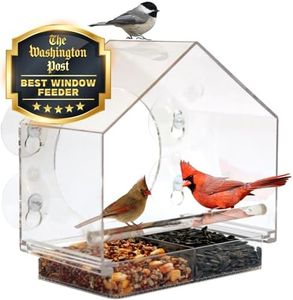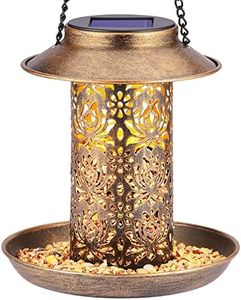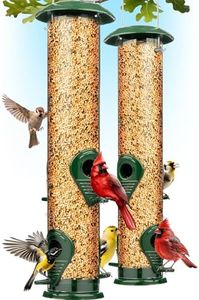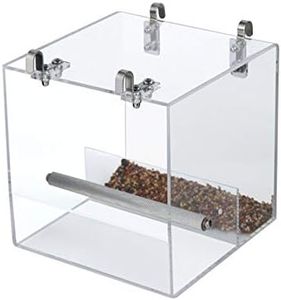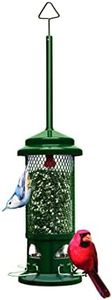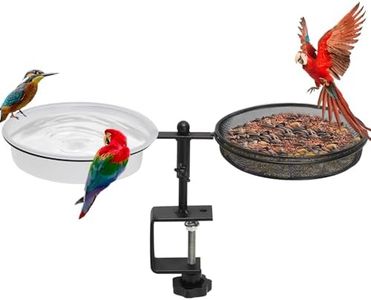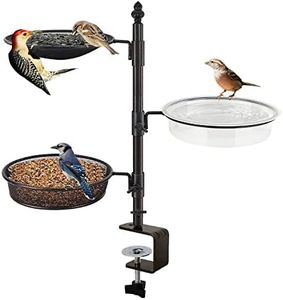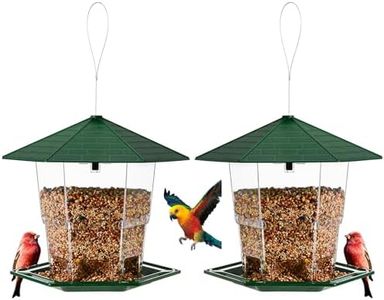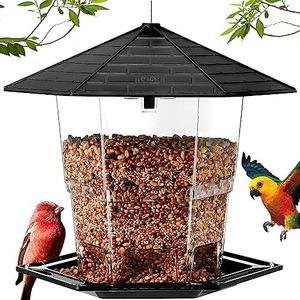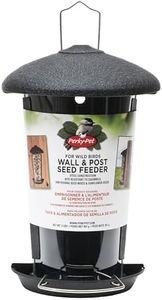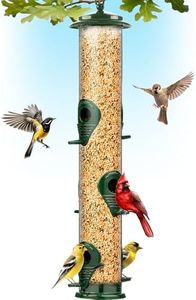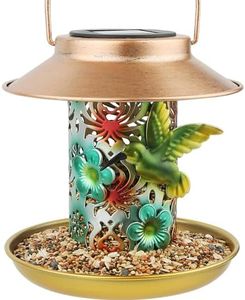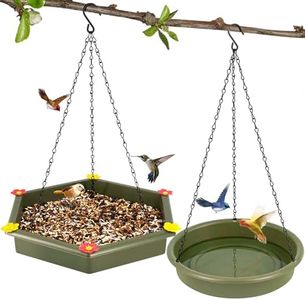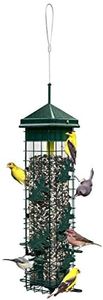We Use CookiesWe use cookies to enhance the security, performance,
functionality and for analytical and promotional activities. By continuing to browse this site you
are agreeing to our privacy policy
10 Best Bird Feeders
From leading brands and best sellers available on the web.Buying Guide for the Best Bird Feeders
Choosing the right bird feeder involves understanding the needs of the birds you want to attract, the feeder's placement, and how much maintenance you're comfortable with. Bird feeders come in various shapes and styles, each designed to attract specific species or offer different types of food. Consider where you'll be placing the feeder (such as in your garden, on a balcony, or hanging from a tree), the types of birds common to your area, and how much time you're willing to spend cleaning and refilling it. A good bird feeder will be easy to fill, simple to clean, durable in weather, and effective at deterring pests.Feeder TypeFeeder type refers to the design and structure of the bird feeder, such as tube, hopper, platform, or suet cage. This is important because different types attract different birds and support different types of food. Tube feeders are great for small songbirds and use seeds like sunflower or millet, while platform feeders attract a wide variety but may invite larger birds and squirrels. Suet feeders are best for insect-loving birds. To choose the right type, think about which birds you most want to see and the kinds of food you’d like to offer.
MaterialThe feeder's material affects durability, weather resistance, and cleaning ease. Common materials are plastic, metal, and wood. Plastic feeders are lightweight and easy to clean, but can degrade over time in sun; metal is long-lasting and often resists squirrel damage, but can get hot in direct sun; wood looks natural but may require more frequent cleaning and weatherproofing. Think about your local climate, how often you can clean it, and whether you need it to be tough against pests when picking material.
CapacityCapacity means how much bird food the feeder can hold at one time, and it’s typically measured in pounds or liters. A larger capacity means less frequent refilling, which is handy if you are away for a few days. However, if you don’t get many birds, too much food may go stale. For busy spots, a higher capacity is great, but for casual feeding or fewer birds, a small feeder is just fine and keeps food fresh.
Ease of CleaningEase of cleaning is about how simple it is to wash and dry the feeder. Cleanliness is essential to prevent mold or illness among birds. Feeders that are easy to take apart and have smooth surfaces will be quickest to clean. If you prefer to minimize maintenance effort, look for feeders that highlight easy cleaning as a feature.
Squirrel and Pest ResistanceMany bird feeders offer features to keep out squirrels or other pests, such as weight-activated perches or metal caging. This is important if you have squirrels or aggressive birds in your area, as they can hog the food and scare off small birds. If you see a lot of these pests around, choose a feeder that’s designed to be pest-proof; if not, a simpler feeder is fine.
Weather ProtectionWeather protection involves features like roof covers, drainage holes, and sturdy construction to keep seeds dry and prevent spoilage. Wet food quickly molds and is unhealthy for birds. For areas with lots of rain or snow, make sure your feeder has good protection and water drainage; in dry climates, this is less of a concern but still helpful.
